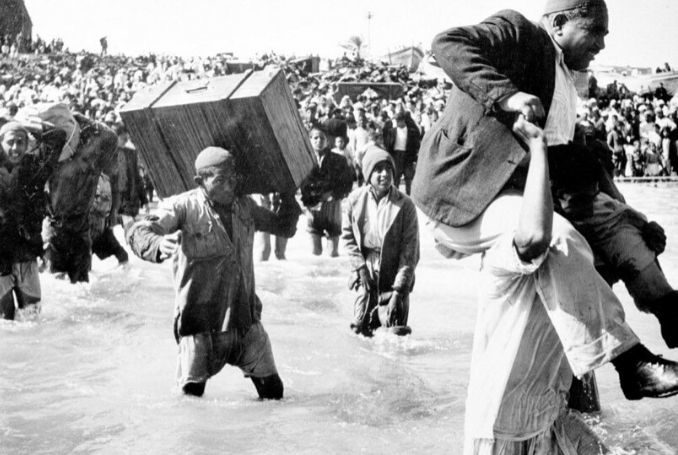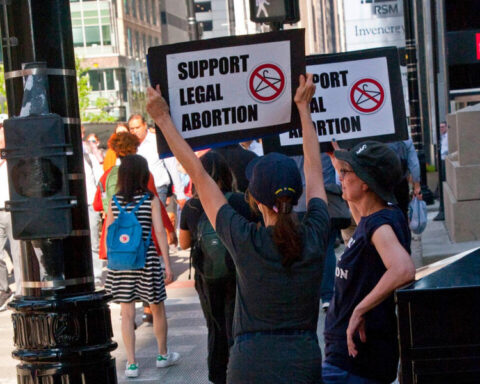Classified documents have recently surfaced that reveal the horrifying accounts of the massacres that took place in order to forge the state of Israel in 1948.
Meryem Akil (Umm Osame), a survivor of the Deir Yassin massacre was only 10 years old when the massacres took place. Meryem recounts “[Zionist gangs] surrounded the village. They didn’t want anyone to escape from the village. They had come to kill us all.”
Meryem continues, “they took my 16-year-old brother out into the garden and bowed his head. They martyred him by shooting five bullets in his head. They killed him in front of my sister’s eyes.”
Meryem lost her father, mother and two brothers that day.
Unfortunately, Meryem’s story is not unique, with many survivors of the 1948 massacres recounting similar events, forcing hundreds of thousands of Palestinians to abandon their homes in hope of keeping their life, but with thousands perishing from heat, dehydration and exhaustion.
War crimes committed during 1948, such as the mass-killings of over 200 Arab civilians commanded by Shmuel Lahis, were rewarded, rather than punished by the Israeli government, with Lahis receiving a coveted prize in 1989.
Recently declassified documents, released under Freedom of Information, give details of the IDF rapidly launching two attacks: one in the North of Palestine and one in the South, extending to villages in Lebanon.
In less than two days, tens of thousands of Palestinians and Lebanese people were fleeing for their lives, leading to the IDF to promptly take the Palestinians’ land for their own.
In November 1947, 120,000 Arab people were in Galilee – a part of Palestine that Israel was determined to take for their own. After the massacres were completed in 1948, only 30,000 Arabs remained in that area.
A commander who organised a separate massacre on Lydda, wrote an official order stating “The inhabitants of Lydda must be expelled quickly without attention to age.”
The brutal acts included the killing and torture of men, women and children in order to take their land by both force and abhorrent destruction, including setting houses on fire to create “mass graves.” It is estimated that between 700,000 and 800,000 Palestinians fled their home whilst the atrocities were being committed.
Since 1948, Palestinians who fled during the massacres have been forcibly denied re-entry to their homeland, leading many to believe that Israel stands by its actions, enforced by its current and ongoing illegal settlements.
A combination of first-hand accounts, from Israeli soldiers to Israeli politicians, have uncovered enough of the history of the massacres through the declassified documents, but much of Israel’s blood-spattered past remains censored, with censorship now being extended from 1948 into 2022.
The Akevot Institute for Israeli-Palestinian Conflict research notes that the reason for the documentation not being released is for “political and image considerations, which are not based on factual and legitimate reasons” stating that it will harm “image and perception of the State of Israel, [containing] components that could strongly damage Israel’s foreign relations.”
The start of the conflict between Palestinians and Zionist Jewish settlers started in 1907, when Zionist leader Arthur Ruppin declared “the creation of a Jewish milieu and of a closed Jewish economy, in which producers, consumers and middlemen shall all be Jewish” prompting waves of Jewish immigration to Palestine.
Jewish settlers who were influenced by Zionist leaders of the time entered Palestine with no intention of integration or peace with Palestinians, but rather to occupy and create separatism, and, eventually, full control, which faced opposition by the existing Jewish population in Palestine.
Jewish scholar and author Yaacov Yehoshua, part of this earlier population, wrote in his memoir: “there were compounds of Jews and Muslims. We were like one family […] Our children played with their [Muslim] children in the yard, and if children from the neighbourhood hurt us the Muslim children who lived in our compound protected us. They were our allies.”
Only when the State of Israel reveals, acknowledges and accepts its past, and moves away from its founding ideologies of being an ethnostate – an ideology which is still perpetuated and peddled in mainstream Israeli politics today – may there ever be peace in the region once again.






